Choosing the Right Drill Bit for Hard Steel: A Comprehensive Guide

When it comes to drilling through hard steel, having the right drill bit can make all the difference. Hard steel poses a unique set of challenges and requires a drill bit that is specifically designed to handle the rigors of cutting through this tough material. In order to ensure success and avoid costly mistakes, it’s important to have a comprehensive understanding of the different types of drill bits available and their specific applications.
One of the most important factors to consider when choosing a drill bit for hard steel is the material of the bit itself. High-speed steel (HSS) is a common choice, as it offers excellent durability and heat resistance. Cobalt drill bits, on the other hand, are specifically designed to handle high heat and can withstand the demands of drilling through hard steel without losing their edge.
Another crucial consideration is the type of drill bit point. For drilling into hard steel, a split point or self-centering point is ideal. Split point bits have a point angle that is designed to reduce cutting pressure and prevent wandering. They are excellent for drilling through hard materials like steel, as they provide a precise and clean hole.
It’s also important to consider the size and length of the drill bit. Smaller bits are generally better suited for drilling through hard steel, as they offer more control and precision. Additionally, a longer bit can provide better access to deeper holes and give you more flexibility in your drilling applications.
Ultimately, choosing the right drill bit for hard steel requires careful consideration of factors such as the material of the bit, the type of drill bit point, and the size and length of the bit. By understanding the specific requirements of drilling through hard steel and selecting the appropriate drill bit, you can ensure successful and efficient results.
Understanding Hard Steel
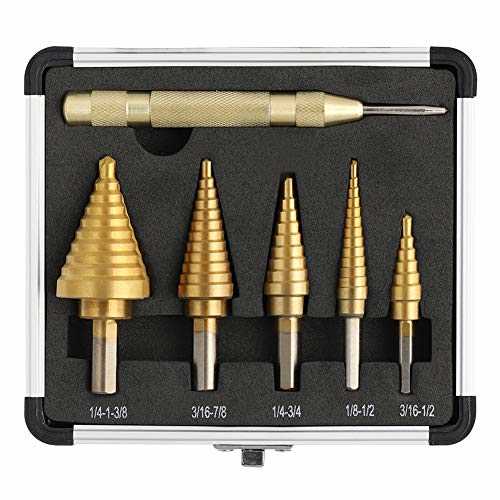
Hard steel is a commonly used term to describe a type of steel that has a high level of hardness. This hardness is achieved through a process called heat treatment, where the steel is heated to a specific temperature and then rapidly cooled. The result is a steel that has increased strength, durability, and resistance to wear and tear.
Hard steel is often used in a variety of applications, such as construction, manufacturing, and engineering. It is used for its ability to withstand high levels of stress and provide long-lasting performance.
There are different classifications for hard steel, such as HRC (Rockwell hardness scale) and HV (Vickers hardness scale). These classifications help determine the hardness level of the steel and allow professionals to select the appropriate tools and techniques for working with it.
Properties of Hard Steel
When working with hard steel, it is important to understand its properties. Some key properties of hard steel include:
- High hardness: Hard steel has a high level of hardness, which allows it to resist deformation and wear.
- Toughness: Despite its high hardness, hard steel still maintains a certain level of toughness, making it resistant to cracking or breaking under applied stress.
- High tensile strength: Hard steel has a high tensile strength, making it resistant to pulling or stretching forces.
- Low ductility: Hard steel has low ductility, meaning it is less malleable and more prone to fracture.
- High abrasion resistance: Hard steel has a high resistance to abrasion, making it suitable for applications where it will be in contact with other materials or surfaces.
Drilling Hard Steel
When it comes to drilling hard steel, it is important to use the right tools and techniques. Standard drill bits are usually not sufficient for drilling through hard steel, as they may become dull or break easily. Instead, specialized drill bits, such as cobalt or carbide tipped bits, are recommended.
These drill bits are specifically designed to withstand the hardness of steel and provide efficient drilling. They have a high level of heat resistance, hardness, and durability. Additionally, using cutting fluids or lubricants during the drilling process can help reduce heat and extend the life of the drill bit.
It is also important to use the right drilling speed and pressure when working with hard steel. A slow drilling speed with high pressure is generally recommended to prevent the drill bit from overheating and breaking.
In conclusion, understanding the properties of hard steel is crucial for selecting the right tools and techniques for working with it. By using specialized drill bits and employing proper drilling techniques, professionals can achieve precise and efficient drilling in hard steel applications.
Selecting the Appropriate Drill Bit Type
High-Speed Steel (HSS) Drill Bits
High-speed steel (HSS) drill bits are the most common and versatile type of drill bits for drilling into hard steel. They are made from a special type of steel alloy that contains a high percentage of carbon. HSS drill bits are designed to withstand high heat and pressure, making them ideal for drilling into hard materials like steel. They are available in various sizes and can be used with hand drills, drill presses, or power drills.
Cobalt Drill Bits
Cobalt drill bits are another popular choice for drilling into hard steel. They are made from a combination of cobalt and high-speed steel, which gives them superior hardness and heat resistance compared to HSS drill bits. Cobalt drill bits are specifically designed for drilling into stainless steel and other tough materials. They have a higher price point compared to HSS drill bits but offer better performance and durability.
Carbide Drill Bits
Carbide drill bits are the most durable and long-lasting drill bits available for drilling into hard steel. They are made from a mix of tungsten carbide particles and a binder material, such as cobalt or nickel. Carbide drill bits are extremely hard and can withstand high temperatures and pressures without losing their cutting edge. They are usually used for specialized drilling applications and are more expensive than HSS or cobalt drill bits.
Diamond-Tipped Drill Bits
Diamond-tipped drill bits are the most expensive but also the most effective type of drill bits for drilling into hard steel. They are coated with a layer of industrial-grade synthetic diamonds, which makes them extremely hard and wear-resistant. Diamond-tipped drill bits can easily cut through hard materials like steel, ceramics, and glass. They are often used in industries that require high precision drilling, such as aerospace and engineering.
Summary
When selecting the appropriate drill bit type for drilling into hard steel, consider the following factors:
- The hardness of the steel
- The desired drilling speed
- The budget
- The durability and longevity of the drill bit
Choosing the right drill bit type will ensure that you achieve clean and precise holes in hard steel without damaging the drill bit or the material.
Important Factors to Consider
1. Material Hardness
One of the most crucial factors to consider when choosing a drill bit for hard steel is the material hardness. Different types of hard steels have varying levels of hardness, so it is important to select a drill bit that is specifically designed to handle the hardness of the steel you are working with.
2. Drill Bit Coating
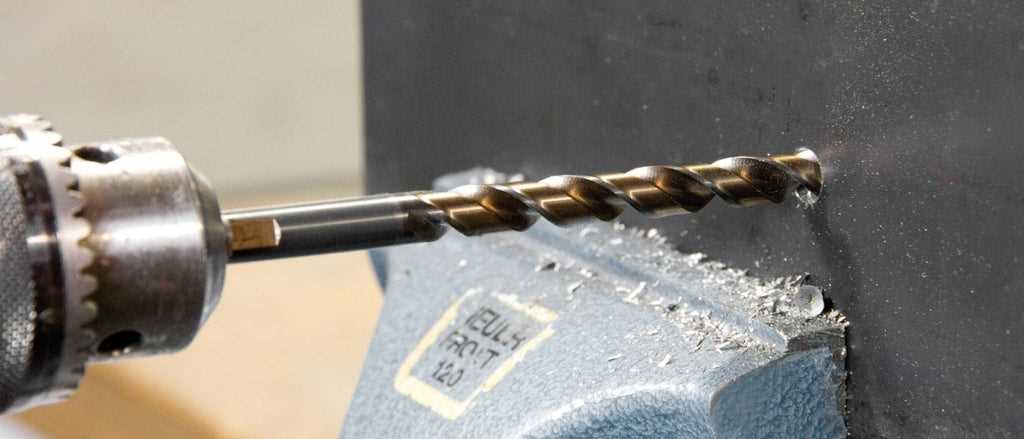
The coating of a drill bit plays a significant role in its performance and lifespan. It can help reduce friction and heat generation, increase the hardness of the bit, and improve chip evacuation. Some common coating options for drill bits used on hard steel include titanium nitride (TiN), titanium aluminum nitride (TiAlN), and black oxide.
3. Flute Design
The flute design of a drill bit is another important factor to consider. The flute refers to the grooves or channels on the surface of the bit. For hard steel drilling, drill bits with a parabolic flute design are often preferred as they provide better chip evacuation and reduce the risk of bit clogging.
4. Drill Bit Geometry
The geometry of a drill bit, such as the point angle and helix angle, can greatly impact its performance in hard steel. A sharper point angle can help penetrate the hard surface more effectively, while a steeper helix angle can aid in chip evacuation.
5. Length and Shank Size
The length and shank size of the drill bit are important considerations, especially when drilling deep holes or using a specific type of drilling machine. It is essential to choose a drill bit that matches the depth requirements and shank size of your application to ensure optimal drilling performance.

6. Feed Rate and Cutting Speed
The feed rate and cutting speed are critical factors that determine the efficiency and quality of drilling on hard steel. It is important to select the appropriate feed rate and cutting speed based on the specific characteristics of the steel and the drill bit being used.
7. Operator Skill and Experience
The skill and experience of the operator should also be considered when choosing a drill bit for hard steel. Inaccurate drilling techniques and improper tool handling can affect the performance and lifespan of the drill bit, regardless of its quality and design. Proper training and knowledge are important for achieving the best results.
8. Cost and Budget
Lastly, the cost and budget consideration cannot be ignored. Different drill bits vary in price, and it is important to balance your budget with the desired quality and performance. It is generally recommended to invest in high-quality drill bits, especially when working with hard steel, as they tend to offer better durability and performance.
Exploring Different Drill Bit Coatings
When it comes to drilling hard steel, choosing the right drill bit coating can make a big difference in terms of performance and durability. Different coatings offer various benefits and characteristics that can enhance the drilling process. In this section, we will explore some of the most common drill bit coatings and their advantages.
1. Cobalt Coating
Cobalt-coated drill bits are known for their high heat resistance and hardness. The cobalt coating provides excellent wear resistance, making these bits suitable for drilling through tough materials like hard steel. They also maintain their sharpness for a longer time compared to uncoated or standard coated bits.
2. Titanium Nitride (TiN) Coating
Titanium Nitride coating is widely used in drill bits for drilling hard steel due to its high hardness and resistance to wear. TiN-coated bits have a golden appearance and offer increased lubricity, which reduces friction and heat during drilling. This coating also helps in extending the tool life and improving the overall performance of the drill bit.
3. Black Oxide Coating
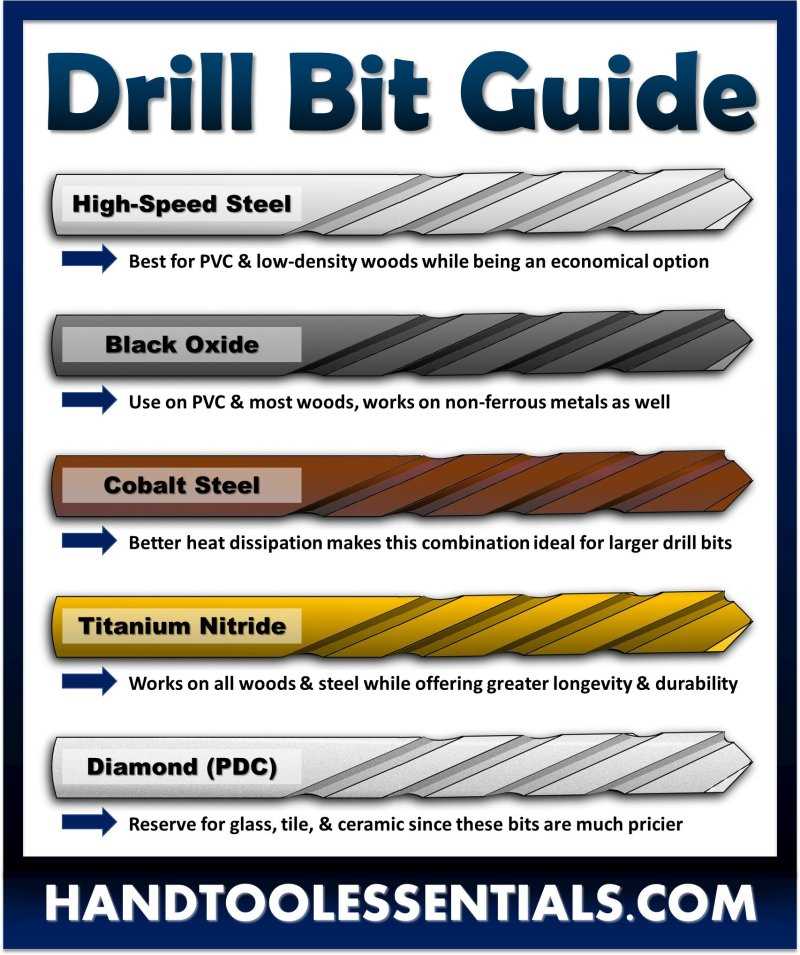
Black Oxide coating is a common coating for drill bits used in metalworking applications. This coating provides increased lubricity and corrosion resistance, allowing the bits to withstand high heat generated during drilling. Black Oxide-coated bits also have a sleek black finish, which helps in reducing friction and improving chip evacuation.
4. Diamond Coating
Diamond-coated drill bits are the hardest and most durable option for drilling hard steel. The diamond coating consists of tiny diamond particles embedded in the bit’s surface, providing superior hardness and wear resistance. These bits can handle high-speed drilling and are ideal for working with abrasive materials like hardened steel or ceramics.
5. Carbide-Tipped Coating
Carbide-tipped drill bits feature a carbide insert at the tip, which provides exceptional hardness and strength. This coating is extremely resistant to wear and is suitable for drilling through hard materials like stainless steel or cast iron. Carbide-tipped drill bits also offer excellent heat resistance and are less prone to chipping or dulling compared to other coatings.
Conclusion
Choosing the right drill bit coating is crucial when working with hard steel. Each coating has its unique advantages, ranging from increased heat resistance to superior hardness. Consider the specific requirements of your drilling project and choose a coating that will optimize performance and longevity. Remember to select the appropriate coating based on the hardness and abrasiveness of the material you will be drilling into.
Size and Shank Considerations
Choosing the Right Size
When drilling into hard steel, it is crucial to use the correct size of drill bit. Using a bit that is too small may result in the bit breaking or getting stuck in the material, while using a bit that is too big can cause the hole to be too large and imprecise. Therefore, it is important to determine the appropriate size based on the project requirements.
The size of a drill bit is typically denoted by its diameter, expressed in inches or millimeters. For hard steel, it is recommended to use a high-speed steel (HSS) twist drill bit. HSS drill bits are made of a hardened steel alloy and are capable of withstanding the high heat generated during drilling. They are available in a wide range of sizes to accommodate different hole diameters.
To choose the right size of drill bit for hard steel, it is advisable to consult a drill bit size chart. These charts provide information on the recommended drill bit sizes for various materials, including hard steel. Additionally, they often include useful references such as the corresponding fractional and decimal drill bit sizes.
Considerations for Shank Type
Apart from the size of the drill bit, it is also important to consider the shank type. The shank is the part of the bit that fits into the drill chuck and ensures a secure grip. There are two main types of shanks: round shanks and hex shanks.
Round shanks, also known as straight shanks, are the traditional design and are suitable for use with most drill chucks. They offer a versatile fit and are commonly used in hand drills and drill presses. However, they may require a chuck key to tighten and loosen the bit.
Hex shanks, on the other hand, have a hexagonal shape and provide a more secure grip without the need for a chuck key. They are often used in quick-change drill chucks, which allow for effortless bit changes. Hex shanks are favored by professionals and DIY enthusiasts alike for their convenience and ease of use.
When drilling into hard steel, it is generally recommended to use a drill bit with a round shank, as it offers a more stable grip and reduces the risk of slippage. However, if using a hex shank drill bit, ensure that it is compatible with the type of drill chuck being used.
In conclusion, when choosing a drill bit for hard steel, consider both the size and shank type. Use the appropriate size to ensure precision and effectiveness, and select a shank type that is compatible with the drill chuck for optimal grip and stability.
Understanding Drill Bit Geometry
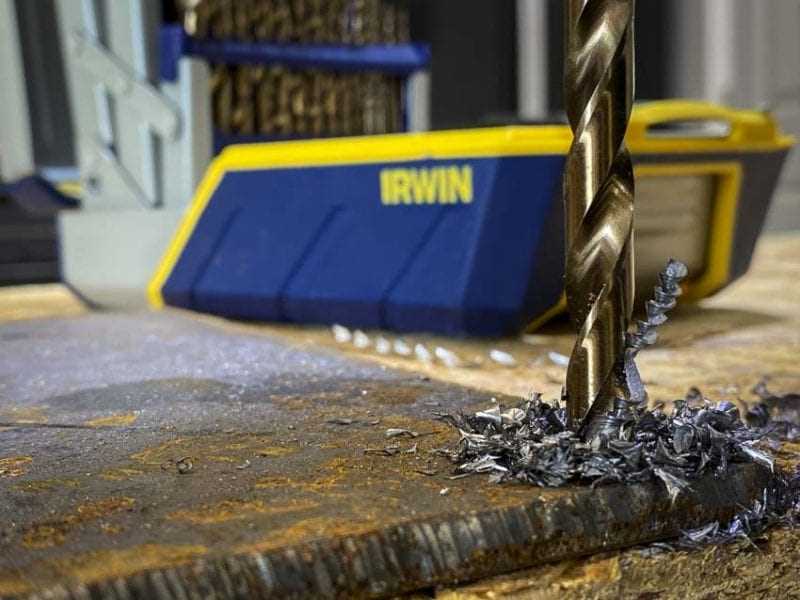
1. Flute Length:
The flute length refers to the length of the spiral grooves on the drill bit. It determines the amount of material that can be removed by the bit during drilling. Longer flute lengths are ideal for drilling deep holes, while shorter flute lengths are better suited for drilling shallow holes.
2. Point Angle:
The point angle refers to the angle at the tip of the drill bit. It affects the cutting action of the bit. Different materials require different point angles for optimal drilling performance. A larger point angle is generally used for softer materials, while a smaller point angle is used for harder materials.
3. Helix Angle:
The helix angle refers to the angle at which the flute spirals around the drill bit. It determines the rate at which chips are expelled from the hole. A higher helix angle allows for faster chip removal, while a lower helix angle provides more stability. The appropriate helix angle depends on the material being drilled.
4. Shank Diameter:
The shank diameter refers to the diameter of the base of the drill bit. It determines the size of the hole that can be drilled. It is important to choose a drill bit with the appropriate shank diameter for the desired hole size.
5. Coating:
Some drill bits have coatings that reduce friction and increase the cutting performance. Common coatings include titanium nitride (TiN), cobalt, and black oxide. The choice of coating depends on the material being drilled and the desired level of performance.
6. Material:
Drill bits are made from various materials, including high-speed steel (HSS), cobalt steel, and carbide. The choice of material depends on the hardness and abrasiveness of the material being drilled. Harder and more abrasive materials require drill bits made from harder materials.
7. Cutting Edges:
The cutting edges of a drill bit are the sharp edges that actually cut into the material. Drill bits can have either two or four cutting edges. Drill bits with more cutting edges provide faster drilling and smoother holes.
8. Overall Length:
The overall length of the drill bit refers to the length from the tip to the end of the shank. It determines the depth of the hole that can be drilled. It is important to choose a drill bit with an appropriate overall length for the drilling task at hand.
9. Web Thickness:
The web thickness refers to the thickness of the metal between the flutes. A thicker web provides more strength and stiffness to the drill bit, while a thinner web allows for faster chip removal. The appropriate web thickness depends on the material being drilled and the desired level of performance.
10. Drill Bit Sets:
Drill bit sets usually come with a variety of drill bits of different sizes and types. They are convenient for drilling tasks that require multiple hole sizes or different types of bits. Investing in a drill bit set can save time and money in the long run.
Understanding the different aspects of drill bit geometry is essential for choosing the right drill bit for hard steel. By considering factors such as flute length, point angle, helix angle, shank diameter, coating, material, cutting edges, overall length, web thickness, and drill bit sets, you can select a drill bit that will provide optimal performance and durability for your drilling needs.
Choosing the Right RPM and Feed Rate
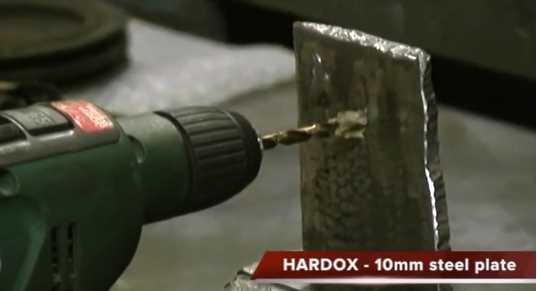
When drilling hard steel, it’s crucial to choose the correct RPM (Rotations Per Minute) and feed rate to ensure the best drilling performance. The RPM and feed rate will depend on several factors, such as the hardness of the steel, the size of the drill bit, and the type of drilling operation.
RPM
The RPM refers to the speed at which the drill bit rotates. The right RPM is essential to prevent damage to the drill bit and achieve optimal drilling results.
For hard steel, it is generally recommended to use a lower RPM to avoid overheating the drill bit and causing wear. A lower RPM also provides more control and helps maintain the drilling accuracy.
To determine the appropriate RPM for drilling hard steel, you can refer to the manufacturer’s recommendations or consult drilling charts that provide RPM guidelines based on the size and hardness of the steel being drilled. These charts are widely available and can be a useful reference tool.
Feed Rate
The feed rate, also known as the cutting speed, refers to the speed at which the drill bit advances into the material. It is crucial to choose the right feed rate to ensure efficient material removal and prevent premature wear of the drill bit.
When drilling hard steel, a slower feed rate is generally recommended. A slower feed rate allows the drill bit to make better contact with the material and helps prevent excessive heat buildup. It also provides more control and reduces the risk of a broken or dulled bit.
The feed rate can be determined using the following formula:
- Feed Rate (inches per revolution) = RPM x Chip Load (inches per tooth)
Chip load refers to the thickness of the material being removed with each tooth of the drill bit. It can be calculated by dividing the feed rate by the number of teeth on the drill bit.
Conclusion
Choosing the right RPM and feed rate is crucial for drilling hard steel effectively and efficiently. It is essential to consider factors such as the hardness of the steel, the size of the drill bit, and the type of drilling operation. By following manufacturer’s recommendations and consulting drilling charts, you can select the appropriate RPM and feed rate for the best drilling performance.
Proper Techniques for Drilling Hard Steel
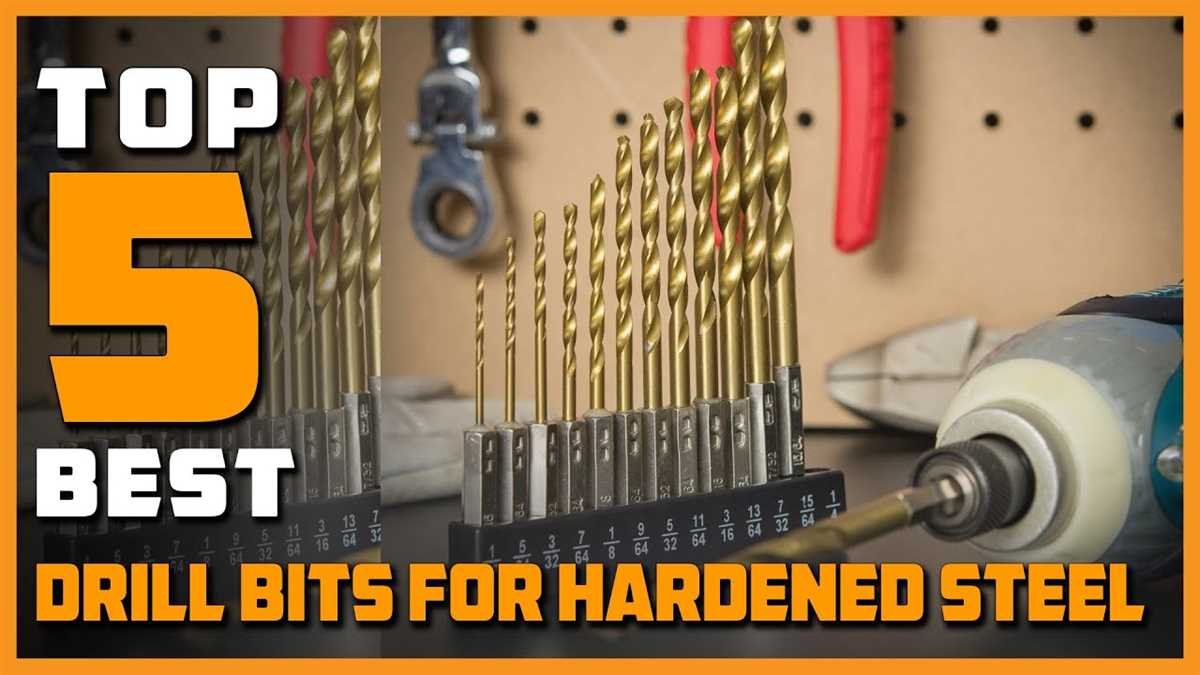
Drilling through hard steel can be a challenging task if not done properly. It requires the right techniques to ensure clean and accurate holes without damaging the drill bit or the steel itself. Here are some proper techniques to follow when drilling hard steel:
1. Use the Right Drill Bit
Choosing the right drill bit is crucial for drilling through hard steel. Opt for cobalt or carbide bits, as they are specifically designed to withstand the high heat and pressure generated by drilling into hard materials.
2. Use Cutting Lubricant
Applying cutting lubricant to the surface of the hard steel will reduce friction and heat generated during the drilling process. This, in turn, prolongs the life of the drill bit and improves drilling efficiency. Make sure to reapply lubricant as needed.
3. Start with a Pilot Hole
Creating a pilot hole is essential when drilling into hard steel. Start with a smaller drill bit to create a guide hole, then gradually increase the size of the drill bit until you reach the desired hole diameter. This helps prevent the drill bit from wandering and ensures a more accurate hole.
4. Drill at a Slow Speed
Drilling through hard steel requires patience. Set your drill to a slower speed to reduce the risk of overheating and premature wear on the drill bit. Slow and steady pressure will allow the bit to cut through the steel more effectively.
5. Use Proper Technique
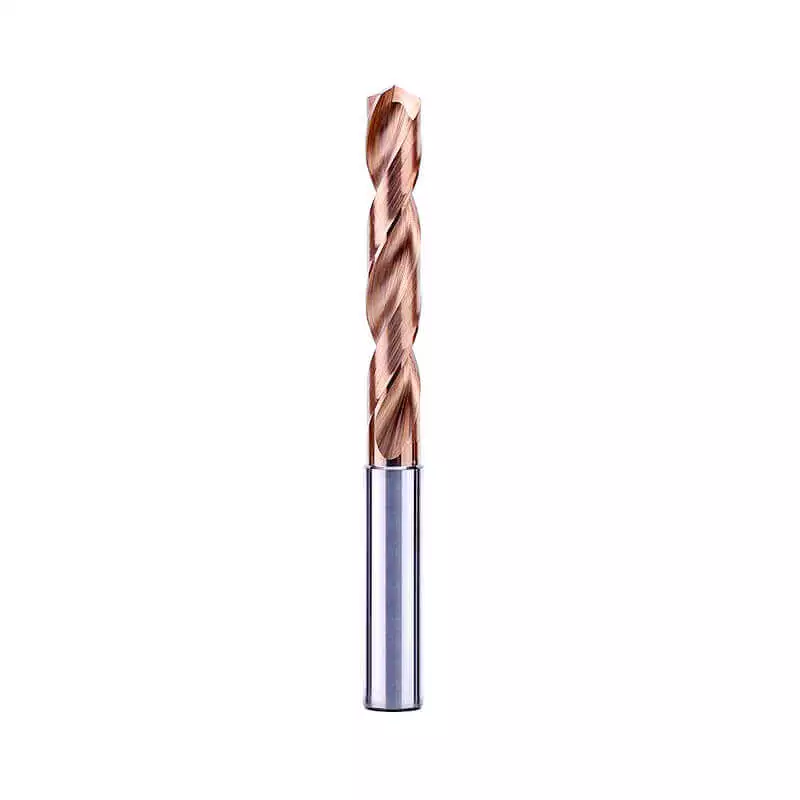
When drilling into hard steel, it is important to use proper drilling technique. Apply steady pressure while keeping the drill perpendicular to the surface. Avoid pushing too hard or using excessive force, as this can lead to drill bit breakage or causing damage to the steel.
6. Cool Down the Drill Bit
While drilling through hard steel, the drill bit can become hot due to the friction generated. To prevent overheating and prolong the life of the drill bit, periodically stop drilling and dip the bit into a container of water or lubricant to cool it down.
7. Clean the Drill Bit Regularly
Hard steel can cause metal chips and debris to accumulate on the drill bit, affecting its performance. Clean the drill bit regularly using a wire brush to remove any built-up debris, ensuring that the cutting edges remain sharp and effective.
By following these proper techniques, you can successfully drill through hard steel without damaging the drill bit or the steel itself. Remember to wear appropriate safety gear, such as safety glasses and gloves, to protect yourself during the drilling process.
FAQ:
What is the most important factor to consider when choosing a drill bit for hard steel?
The most important factor to consider when choosing a drill bit for hard steel is the hardness and durability of the bit itself. It needs to be able to withstand the high pressure and heat generated when drilling through hard steel.
Are all drill bits suitable for drilling through hard steel?
No, not all drill bits are suitable for drilling through hard steel. Some drill bits are specifically designed for softer materials and may not be able to withstand the pressure and heat generated when drilling through hard steel.
What type of drill bit is typically recommended for drilling through hard steel?
A carbide drill bit is typically recommended for drilling through hard steel. Carbide drill bits are extremely hard and can withstand the high pressure and heat generated when drilling through hard steel.
What are the advantages of using a cobalt drill bit for drilling through hard steel?
A cobalt drill bit is made from a highly durable and heat-resistant material called cobalt steel. It can withstand the high pressure and heat generated when drilling through hard steel, making it an excellent choice for this type of application.
What are some tips for drilling through hard steel?
Some tips for drilling through hard steel include using a low speed and high pressure, using cutting fluid to lubricate the drill bit and reduce heat, and periodically lifting the drill bit to remove chips and prevent overheating.
Video:










